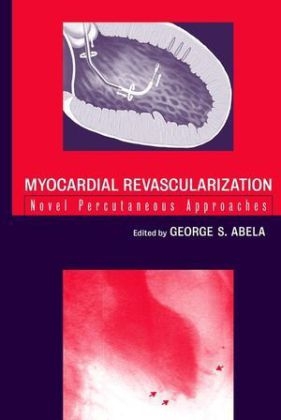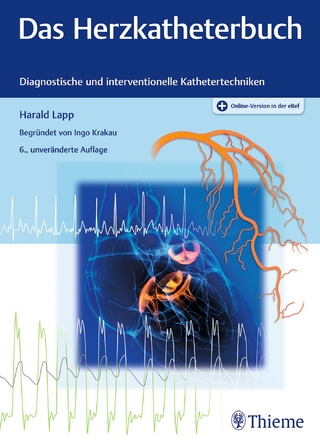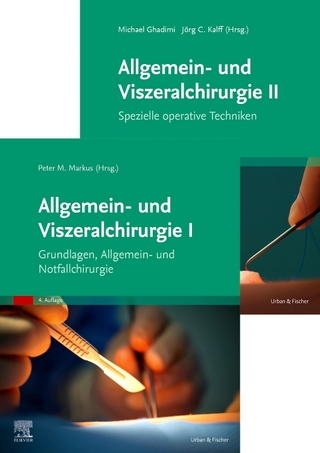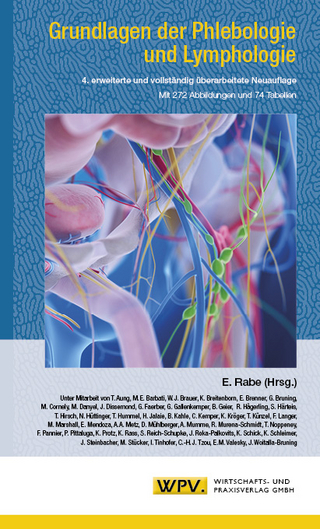
Myocardial Revascularization: Novel Percutaneous A Approaches
John Wiley & Sons Inc (Verlag)
978-0-471-36166-4 (ISBN)
- Titel ist leider vergriffen;
keine Neuauflage - Artikel merken
The percutaneous method of transluminal myocardial revascularization has roused enthusiasm in the field of cardiology because it is minimally invasive and relatively inexpensive. In his progressive new book, George Abela, a widely recognized pioneer in cardiology and lasers, has brought together the expertise of international leaders on the subject in this premier reference, Myocardial Revascularization: Novel Percutaneous Approaches.
This resource provides interventional cardiologists, technical personnel and nurses in cardiac catheterization labs with the most current scholarly and clinical information available, including: A historical overview of myocardial revascularization (including the Vineberg procedure and the more recent TMR/PMR procedures) Biological responses and mechanisms of action in myocardial revascularization using mechanical, laser, ultrasound, and cryoenergy Current technology for the percutaneous method of the procedure Descriptions of other novel approaches including percutaneous in situ coronary venous arterialization Discussion of results from preliminary and advanced TMR/PMR in canine and human procedures Examination of various catheter navigation systems and potential adjunct gene therapies Myocyte transplantation to replenish the depleted myocardium Insights into the economics of these novel percutaneous techniques
Dr. George S. Abela is currently professor of medicine, Chief of the Cardiology Division and director of the fellowship training program at Michigan State University. Prior to that he was an associate professor of medicine at Harvard Medical School and director of Interventional Research and Cardiovascular Photobiology Laboratory at Deaconess Hospital as well as co-director of the Institute for Prevention of Cardiovascular Disease. He completed his residency and internship in medicine at Emory University and his fellowship in cardiology at the University of Florida. Dr. Abela has a master's degree in cardiovascular pharmacology, an M.D. from the American University of Beirut in Lebanon and an MBA from Michigan State University. He was elected as vice president of the American Society for Lasers in Medicine and Surgery (1993-4) and was the recipient of the Mark B. Award and the Ellet Drake Lectureship Awards. He is a fellow of the American College of Cardiology, a member of the Association of Professors of Cardiology, the American Heart Association, The American Federation for Clinical Research, American College of Physicians, The Central Society of Clinical Research and the Sigma-Xi Scientific Society. He is past recipient of the Young Investigator Award and Research Career Development Award from the National Institutes of Health. Dr. Abela is an internationally recognized pioneer in the development and evaluation of numerous laser systems for the treatment of cardiovascular disease and is actively continuing his research and publications in this area. He was the first investigator in the U.S. to receive FDA approval for using laser angioplasty in the peripheral circulation. Other work has included using laser for ablation of arrhythmia generating foci in the heart, detecting platelet aggregates in circulating fluids and evaluation of the mechanism of transmyocardial revascularization (TMR).
Foreword. Preface. Contributors. PART I: BACKGROUND OF MYOCARDIAL REVASCULARIZATION TECHNIQUES. Myocardial Revascularization: The Role of the Vineberg Operation and Related Procedures (O. Topaz). Historical Perspectives and Development of Transmyocardial Revascularization (M. Cayton & M. Mirhoseini). Clinical Efficacy and Experience with Transmyocardial Laser Revascularization (TMR) (K. Horvath). PART II: BIOLOGICAL RESPONSES AND MECHANISMS OF ACTION OF MYOCARDIAL REVASCULARIZATION. Angiogenesis vs. Arteriogenesis: Can Different Transmyocardial Revascularization Approaches be Distinguished (R. Virmani, et al.). Revascularization versus Denervation: What are the Mechanisms of Symptom Relief? (G. Hughes & J. Lowe). Potential Mechanisms of Myocardial Revascularization Techniques: Channels, Functional and Structural Remodeling, Angiogenesis, Denervation, or Placebo (E. Hage-Korban, et al.). Biosense NOGA(TM): Percutaneous Laser Myocardial Revascularization and Gene Transfer (M. Foster, et al.). PART III: CURRENT TECHNOLOGY FOR PERCUTANEOUS MYOCARDIAL REVASCULARIZATION. Percutaneous Myocardial Revascularization (PMR): Indications and Clinical Experience (J. Eisenberg, et al.). Novel Revascularization Strategies: PMR, TMR and Percutaneous in situ Coronary Venous Arterialization (W. Abernethy, et al.). PART IV: OTHER METHODS OF MYOCARDINAL REVASCULARIZATION. Transmyocardial and Percutaneous Myocardial Revascularization: Nonlaser Approaches (B. Kantor, et al.). Cryoenergy-Induced Neovascularization for Myocardial Reperfusion: A Novel Alternative to Percutaneous Myocardial Revascularization (R. Gallo & M. Dubuc). Ultrasonic Surgery: Mechanism of Action and Implications for Transmyocardial Revascularization (R. Verdaasdonk, et al.). Left Ventricular Electromechanical Mapping As a Diagnostic Method (E. Perin, et al.). Percutaneous Gene Therapy for Myocardial Angiogenesis (S. Werns). Myocardial Angiogenesis: Clinical Trial Results (T. Henry & C. Boisjolie). The Coronary Veins as an Alternative Access for Gene Transfer and Angiogenesis by Selective Pressure-Regulated Retroperfusion (P. Boekstegers, et al.). Percutaneous Intrapericardial Drug Delivery for Myocardial Angiogenesis (S. Waxman). Cell Transplantation: Its Application in the Treatment of Cardiac Dysfunction and its Effect on Angiogenesis (M. Yao & R. Kloner). Percutaneous Myocardial Revascularization: Financial Potential And Market Acceptance (T. Woodward, et al.). Glossary. Index.
| Erscheint lt. Verlag | 9.11.2001 |
|---|---|
| Verlagsort | New York |
| Sprache | englisch |
| Maße | 185 x 258 mm |
| Gewicht | 774 g |
| Einbandart | gebunden |
| Themenwelt | Medizinische Fachgebiete ► Chirurgie ► Herz- / Thorax- / Gefäßchirurgie |
| Medizinische Fachgebiete ► Innere Medizin ► Kardiologie / Angiologie | |
| ISBN-10 | 0-471-36166-6 / 0471361666 |
| ISBN-13 | 978-0-471-36166-4 / 9780471361664 |
| Zustand | Neuware |
| Haben Sie eine Frage zum Produkt? |
aus dem Bereich


